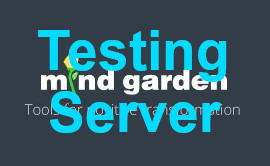How I "Let It Go"
Posted on 25 July 2016
Blog by Issa Coultas

Some time ago, I was having trouble dealing with my anger. This anger specifically stemmed from a year-long experience I had with a woman I knew in college named Janet*. Although I had not seen Janet in over 3 years, my anger towards her would not subside. Hearing her name – even if it wasn’t relating to her – made me angry; the mention of her college major made me angry; hearing her favorite music made me angry. This anger became distracting – I spent so much time and energy brooding even though she was no longer in my life. The harsh truth was that despite my efforts to create physical distance from Janet, my anger was keeping her in my life – anger was keeping the hurt alive and in the present rather than left in the past. In an effort to put my experience with Janet behind me, I made the decision to address and assuage my anger.
As a psychologist, I have access to many psychological resources. One such resource is my friend – and President of Mind Garden – Dr. Robert “Robb” Most. He suggested I use the Enright Forgiveness Inventory (EFI) to address my anger.
Let’s take a moment and think about that: Enright “Forgiveness” Inventory. Forgiveness was not something I wanted to do. To me, forgiveness meant to absolve sins and give the offender a “clean slate.” I could not disregard all of Janet’s wrongdoings; she did not deserve my forgiveness. I could not see how to put my experience with her behind me when thinking about forgiveness made me feel even more anger.
However, Robb had never steered me wrong, so I decided to check out the EFI. The EFI is a 65-question inventory of your current feelings towards the person(s) who hurt you. For assessment purposes, the EFI asks that you focus on one incident while completing the inventory. In my case the hurt was accumulated over some time, so I summarized my year-long experience as a single incident. There were some acute incidents of hurt I could have focused on, but I decided to start with the big picture.
I will not sugar-coat this: completing the EFI was difficult and emotional. As I expressed earlier, my angry feelings towards Janet were close to the surface – and the EFI required me to directly address my feelings and to relive my experience. I first attempted the EFI during lunch – thinking I could quickly finish the inventory and then deal with my results after work. This attempt completely failed. I was not prepared to think about and address my experience in the detail required by the EFI. My heart started beating quickly, I started sweating, and I felt my face turn an unnatural shade of red. Worst of all, I was in public surrounded by people enjoying their lunch. Angry and embarrassed, I discarded the inventory, tossed my lunch, and sat brooding in my office for the rest of the day.
The next time I started the EFI, I made sure I was alone and comfortable. I was also prepared for my angry feelings this time. When I began to feel my anger, I did not panic or feel embarrassed. I let my anger come through and continued the inventory with honest emotion. While difficult and emotional, regardless of my environment, here I was able to complete the EFI.
“Let It Go” Report
I completed the EFI online and thus had the option to either download my data file or use an Individual Report to get my EFI scores. Considering how much help I anticipated needing, I decided to use an Individual Report. The “Let It Go” Report – created especially for the EFI – is an interpretive report that walked me through the steps of forgiveness or “letting it go.” One of the first tools the report provided was a definition of what is meant by “forgiveness”. I learned that, contrary to the common (and my own) understanding of the term – forgiveness is not a superficial act or excusing someone’s behavior. Rather, forgiveness is to offer mercy to one who has been unfair to you. The act of forgiveness is to acknowledge that you have been treated unfairly and to respond by getting rid of the negative anger and resentment while adding positive dimensions like compassion and goodness. “Letting it go” denotes letting the experience go into the past as well as clearing the anger and resentment from your psyche.
This definition of forgiveness appealed to me. I had always thought of forgiveness as a weakness, but the “Let It Go” Report treated it as a strength. The most important point to me was in understanding that I can forgive someone while remaining distrustful of them. Forgiveness is not necessarily reconciliation; forgiveness is about developing positivity within myself. While I couldn’t see myself easily offering forgiveness, I could start to see the benefits of “letting it go”.
A significant use of the “Let It Go” Report was the interpretation of my EFI scores. The report detailed my overall forgiveness score (196 in a possible range of 60-360) and told me that I was likely feeling a significant amount of anger and hurt, but not so much that I couldn't handle the forgiveness process on my own. Next, the report identified my Feelings scores, my Behaviors scores, and my Thoughts scores to give me a detailed picture of how my hurt was being expressed. This level of detail was particularly useful because it revealed that my Behaviors scores were significantly lower than my Feelings or Thoughts scores in both negative and positive aspects. This is probably because I am no longer in contact with Janet and therefore do not use actions to express my hurt. However, my Feelings and Thoughts scores were very high in the negative aspects (e.g., having negative feelings or thoughts about Janet) and very low in the positive aspects, suggesting that I don’t have many positives to think or feel about Janet.
“Let It Go” Process
Once I knew my current forgiveness status with Janet, I needed to figure out where to begin in the “let it go” process. The “Let It Go” Report identified my progress in this four-phase process, developed by EFI author Dr. Robert Enright. The four phases are called Guideposts and each corresponds to a different development level of forgiveness. The four phases are: Uncovering Phase (uncovering your anger), Decision Phase (deciding to forgive), Work Phase (working on forgiveness), and Discovery Phase (discovery and release from emotional prison).
I found that I could skip most of the first two phases. The Uncovering Phase focuses on acknowledging the wrongdoing and recognizing that my anger, shame, or guilt is unhealthy. This recognition was what brought me to the EFI in the first place. The Decision Phase focuses on understanding what “forgiveness” means and being committed to the “let it go” process. I could barely say I’ve completed the Decision Phase – understanding and being committed to this process was still very new to me. My scores reflected this, showing lower scores in the Decision Phase than in the Uncovering Phase.
For my “let it go” process, I started at the Work Phase. The Work Phase focuses on the difficult and gritty efforts toward forgiving the person who wronged you. This was a very challenging phase and took me a long time to complete. One of the steps in the Work Phase was particularly hard for me to accomplish: “Give a gift to the one who wounded you.” When I first read this step, I muttered some expletives and almost gave up on the whole process. Why should I give Janet a gift? When I receive a gift it is either a holiday custom, celebrating an accomplishment, or because I did a good deed. The thought of giving Janet a gift felt like I would be rewarding her for hurting me. She might think her actions were acceptable and we could be friends again. I couldn't believe that giving her a gift was a good idea.
But I came around. As the “Let It Go” Report pointed out, there are different types of gifts and different ways to give them. Because Janet had proven herself untrustworthy and I was not letting her back into my life, my gift must not send a message of reconciliation. Instead of sending her a direct, physical gift, I opted for an indirect, social gift. When Janet comes up in conversation, I do not talk negatively about her and I do not talk about any injustice she caused. I will maintain my distance because I do not trust her but I will not be hostile or mean toward her, although I could argue I have that right. In this way, I am giving Janet the gift of mercy although she was unfair to me.
Despite finding a solution, this was (and still is) a difficult step for me. When Janet comes up in conversation, my impulse is to discredit her trust and point out her faults to others – to hurt her because she hurt me. Instead, I don't add to the conversation or I say positive true statements about her (such as complimenting her intelligence or her dedication to yoga).
Currently, I am on the Discovery Phase – or what I have learned from “letting it go.” A big part of this is making forgiveness a regular part of my life. Having gone through this process once, I know I have the capacity to forgive. More importantly, I know forgiveness is worth the work. By letting my anger and resentment go, I show strength in the face of offense and wrongdoing. By forgiving, I replace negativity with strong positivity and inner fulfillment.
I highly recommend the “Let It Go” process to anyone dealing with hurt caused by wrongdoing. If you continue to hold onto the negativity and anger, you are truly hurting yourself. I know it is difficult to take steps away from anger – I held onto my anger for over 3 years before confronting it – but the return of my energy and positivity is worth it. “Letting it go” was a truly rewarding experience. My incidents with Janet are now completely in the past – both in terms of time and emotion. As challenging as the process was, I now feel free from those frequent reminders of my hurt. I have not forgotten the wrongdoing and I have not forgotten Janet, but those memories no longer have the power to trigger my anger. Through “letting it go,” I have finally overcome the consequences of the wrongdoing.
*Name changed.
To learn more please visit the Enright Forgiveness Inventory product page.

 SEARCH
SEARCH LOGIN
LOGIN  BLOG
BLOG
 CART
CART